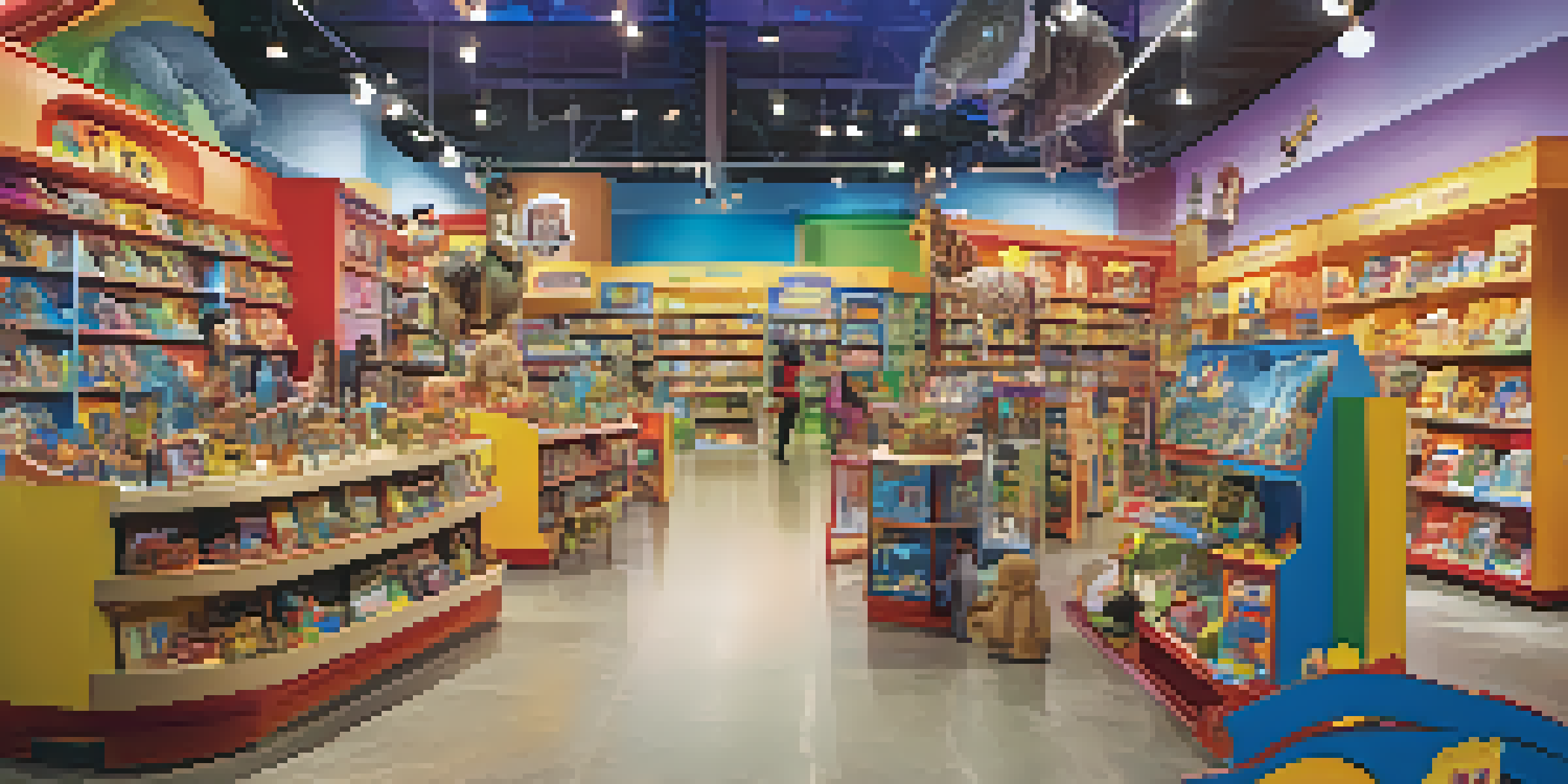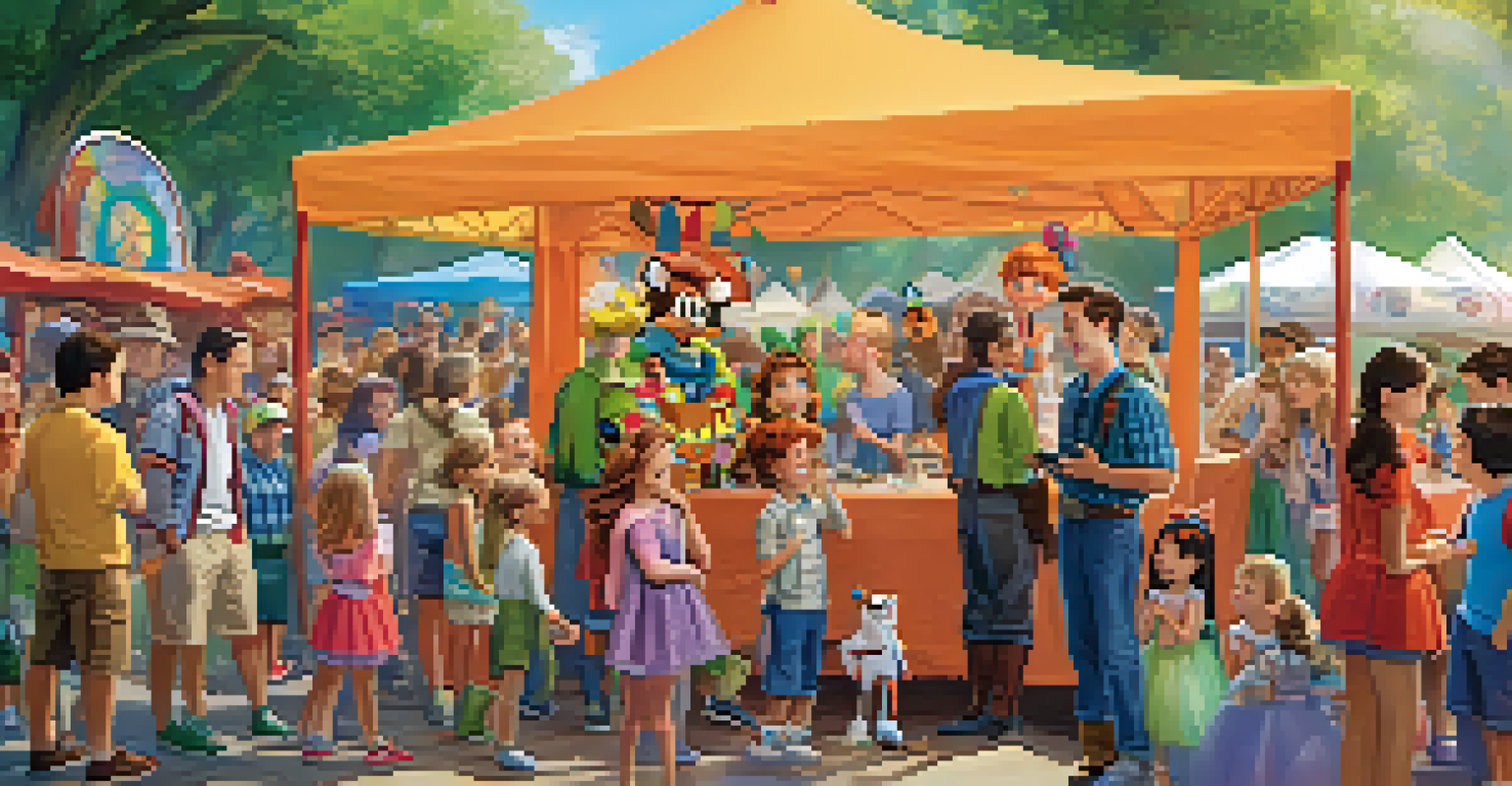Merchandising Strategies in Hollywood Children's Media

Understanding the Importance of Merchandising in Children's Media
Merchandising in children's media is about more than just toys; it's a vital strategy for brand growth. With the rise of popular franchises, effective merchandising can significantly enhance a brand's visibility and profitability. Think of it as a way to extend the life of a story beyond the screen, allowing kids to engage with their favorite characters in tangible ways.
Merchandising is the art of making a product visible and desirable, but it also creates a deeper relationship between the brand and its audience.
When children connect emotionally with a character, they often want to bring a piece of that world into their own lives. This desire fuels the demand for merchandise, from plush toys to clothing. For instance, consider how the popularity of 'Frozen' led to a surge in Elsa and Anna merchandise, creating a multi-billion dollar franchise almost overnight.
Ultimately, successful merchandising not only generates revenue but also fosters a loyal fan base. By integrating merchandise into the storytelling process, brands can create an immersive experience that keeps children engaged long after the credits roll.
Character-Driven Products: Building Emotional Connections
At the heart of effective merchandising strategies are the characters that resonate with children. Characters like Mickey Mouse or the Minions become more than just figures on a screen; they embody feelings of joy and adventure. This emotional connection is pivotal in driving merchandise sales.

Children often want to mimic their favorite characters, leading to a wide range of products that reflect these personas. For example, action figures, costumes, and even themed school supplies allow kids to feel like they are part of their beloved stories. The more relatable and engaging the character, the more likely merchandise will fly off the shelves.
Merchandising Extends Brand Life
Effective merchandising allows children's media brands to enhance visibility and profitability by connecting emotionally with their audience.
This approach not only boosts sales but also encourages imaginative play. When children use toys that reflect their favorite characters, they create their own narratives, deepening their connection to the brand and ensuring a lasting impact.
Leveraging Multimedia Platforms for Merchandise Promotion
In today's digital age, leveraging various multimedia platforms is essential for promoting merchandise. Movies, TV shows, and online content all serve as powerful vehicles for showcasing products. For example, a new animated series can introduce characters and their accompanying merchandise simultaneously, maximizing exposure.
In a world where children are increasingly engaged with digital content, the importance of tangible connections through merchandise cannot be underestimated.
Social media also plays a crucial role in this strategy. Brands can use platforms like Instagram and TikTok to create engaging content that highlights new products, often featuring influencers or beloved characters. This not only reaches a wider audience but also creates buzz that can lead to increased sales.
Moreover, interactive content, such as games or apps, can incorporate merchandise in a fun way. By allowing children to engage with products through play, brands can drive interest and boost sales while ensuring that the merchandise remains top-of-mind.
Collaborations and Licensing: Expanding Brand Horizons
Collaborations and licensing deals are powerful tools in the merchandising strategy arsenal. By partnering with well-known brands, children's media can tap into existing customer bases and expand their reach. For instance, a collaboration between a popular animated series and a leading toy manufacturer can lead to innovative product lines that appeal to fans.
Licensing agreements allow brands to create a wider variety of products without the need to develop everything in-house. This means that a hit show can lead to everything from lunchboxes to bedding, all while maintaining brand integrity and appeal. Consider how Disney has successfully licensed its characters to various companies, creating an extensive range of products.
Emotional Connections Drive Sales
Characters that resonate with children lead to a wide range of merchandise, fostering imaginative play and deeper brand loyalty.
These partnerships not only enhance product offerings but also create a sense of exclusivity. Limited edition products or collaborations can generate excitement, encouraging parents to act quickly before items sell out, further driving sales.
The Role of Retail Experiences in Children's Merchandising
Creating memorable retail experiences is crucial for engaging young consumers. Stores that offer interactive displays or immersive environments can captivate children's attention and encourage them to explore merchandise. Think about how stores have themed sections for blockbuster movies, allowing children to step into their favorite worlds.
In-store events, such as character meet-and-greets or exclusive merchandise launches, can further enhance the shopping experience. These events not only create excitement but also provide opportunities for families to engage with the brand in a fun, interactive way. For example, a toy store hosting a 'Toy Story' event where kids can play with new products fosters a connection to the film.
Additionally, integrating technology, such as augmented reality, can elevate the shopping experience. Children can see their favorite characters come to life right before their eyes, making the act of shopping more engaging and enjoyable, while naturally increasing merchandise sales.
Sustainability in Children's Media Merchandising
As awareness of environmental issues grows, children's media brands are increasingly prioritizing sustainability in merchandising strategies. Parents today are more conscious of the products they buy, often seeking out eco-friendly options for their children. This shift creates an opportunity for brands to differentiate themselves and build loyalty.
Sustainable merchandising can include using recycled materials, minimizing packaging, and ensuring ethical production practices. For instance, brands that offer toys made from recycled plastics not only appeal to eco-conscious parents but also teach children the importance of sustainability. This approach can turn merchandise into a valuable teaching tool.
Sustainability Shapes Future Trends
As parents prioritize eco-friendly products, children's media brands are incorporating sustainability into their merchandising strategies to build loyalty.
Furthermore, promoting sustainability can enhance a brand's image and attract new customers. By aligning with values that resonate with families, brands can foster deeper connections and ensure long-term success in an increasingly competitive market.
Future Trends in Merchandising for Children's Media
Looking ahead, several trends are shaping the future of merchandising in children's media. One significant trend is the rise of personalized products, where kids can customize their toys or clothing. This trend taps into the desire for individual expression, allowing children to feel a unique connection to the merchandise.
Another emerging trend is the integration of technology, such as smart toys that interact with children through apps. These products not only provide entertainment but also educational value, blending play with learning experiences. As technology continues to evolve, brands that innovate will likely stay ahead of the curve.

Lastly, the focus on inclusivity and representation in children's media is changing the landscape of merchandising. Brands are increasingly recognizing the importance of diverse characters and stories, creating products that reflect a wider array of experiences. This shift not only enriches the merchandise but also resonates with a broader audience, fostering a sense of belonging.